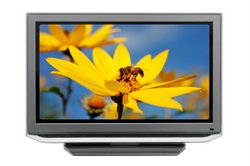DTV (Digital TV) Formats
What do all the numbers and letters mean?
Each format has a number and a letter:

Standard-Definition (SDTV) is 480i
Enhanced-Definition (EDTV) is 480p
High-Definition (HDTV) is 1080i and 720p
The number indicates resolution, or how many horizontal lines of information make up a single frame of video.
Generally speaking, the bigger the number, the sharper and more detailed the images. The letter indicates the method of picture scanning either interlaced or progressive.
Interlaced scanning (1080i & 480i) are the horizontal lines in a video frame that are divided into two groups, odd and even.
If you were to number the lines from the top to the bottom of the screen, one group would be the odd numbered lines, and the other would be the even numbered lines.
All the odd lines, then all the even lines, are updated
60 times a second, alternating between the two. This means the complete picture frame refreshes 30 times a second. This is not noticeable on smaller TV screens but can cause an obvious flicker on larger screens.
Progressive scanning (720p & 480p) refreshes the whole picture frame (all even and odd horizontal lies)
60 times a second. This gets rid of the flicker, but requires the TV to handle more information since twice as many picture frames are displayed each second.
Interlaced vs. Progressive Scanning
Return from DTV Formats to EZ Digital TV Home Page